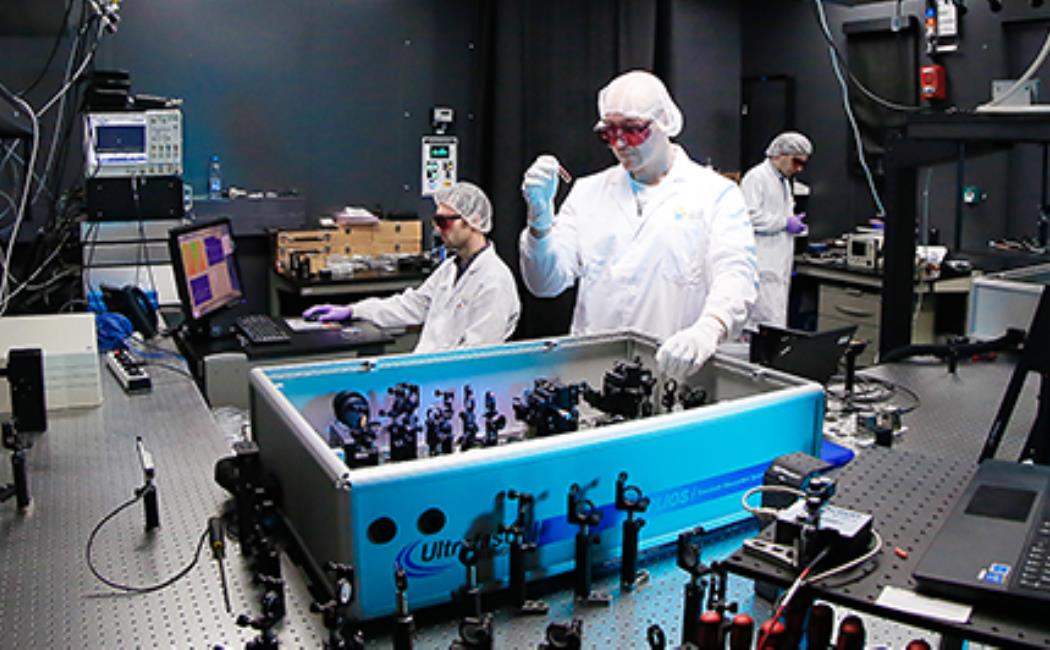
Ultrafast Laser Spectroscopy and 4D Imaging Laboratories
Ultrafast Laser Spectroscopy and Imaging Laboratory in KAUST Solar Center is equipped with state-of-the-art tools to study light-matter interactions as well as submicron scale imaging of functional structures and 3D embedded micromachining. Generally, time-resolved laser spectroscopy and four-dimensional ultrafast electron microscopy (4D UEM) offer a wide range of nascent applications in various areas of research including chemistry, physics, materials science and nanotechnology. It is possible now to probe directly the very early dynamical events happening in femtosecond (1 femtosecond = 10-15 second) and picosecond (1 picosecond = 10-12 second) time scales. In these methodologies, two ultra-short pulses are required: one is used to excite the sample for dynamics initiation, and the second pulse (either optical or electron) monitors precisely the state of the system after a very well-defined time delays between the two pulses, providing an extremely versatile method to visualize the most important dynamical processes in many research areas of significance. For instance, electron transfer reaction dynamics, the key for solar cell performance, can be directly tracked in real time by means of femtosecond time-domain transient absorption, infrared and fluorescence measurements, all of which were carried out with tunable ultrashort laser pulses. These experimental methods are ideal and powerful means of identifying species over wide range of time scales, providing essential information on the mechanistic and kinetic details of the fundamental events that occur in a very short time scales. They also provide the vibrational and electronically information that clarifies conformational changes occurring in molecule under investigation during the course of reaction. More importantly, the comparative study using such idealistic spectroscopic and microscopic tools is extremely important to provide the complete reaction story without missing any detailed information. For a system of interest, one can pick out the transient species and subsequently map the progression from reactant via possible intermediates towards the final product during the course of reaction, identifying all possible transition states along the reaction pathways.
For additional information please visit the Ultrafast Dynamics and Ultrafast Laser Spectroscopy and 4D Electron Imaging websites.